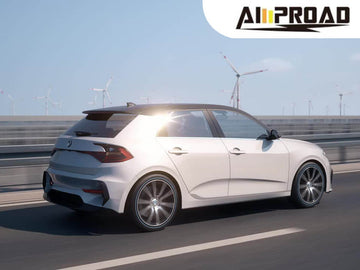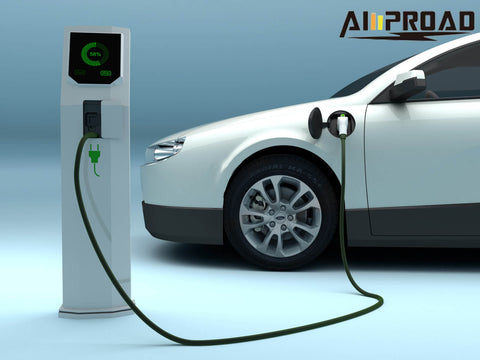
Electric vehicles are zooming onto the scene, but the language around charging them can be a bit of a roadblock. Have you ever encountered terms like "EV charging station," "charging dock," and "EVSE"? While they all refer to the equipment that gets your electric car back on the road, understanding the subtle differences between these names can be helpful. This article will act as your personal GPS, navigating the world of EV charger terminology and ensuring you always find the right term for the job.
What Are the Different Names for EV Chargers?
When it comes to Electric Vehicle (EV) chargers, you might have heard a variety of terms used to describe them. From charging stations to power points, the terminology surrounding EV chargers can be confusing for many users.
Charging Station vs. Charging Point:
One common source of confusion is the distinction between a charging station and a charging point. While these terms are sometimes used interchangeably, they actually refer to different components of the charging infrastructure. A charging station typically refers to the entire setup, including the physical infrastructure and associated equipment, such as cables and connectors. On the other hand, a charging point specifically refers to the outlet where the vehicle is connected to receive power.
EVSE vs. EV Charger:
Adding to the confusion are terms like EVSE (Electric Vehicle Supply Equipment) and EV charger, which are often used synonymously but technically refer to different components. EVSE refers to the equipment that delivers electrical energy from the grid to the vehicle's battery, including the charging cable and connector. Meanwhile, the EV charger is the device within the EVSE that controls the flow of electricity and manages the charging process.
Understanding Level 1, Level 2, and Level 3 Charging:
Another term that is commonly used but can cause confusion is Level 1, Level 2, and Level 3 charging. These terms are used to describe the different levels of charging speeds available for EVs. Level 1 charging refers to standard household outlets, which provide the slowest charging speeds. Level 2 charging involves dedicated charging stations that deliver faster charging rates, while Level 3 charging, also known as DC fast charging, offers the fastest charging speeds available.
Impact of Confusion on User Experience:
The confusion surrounding EV charger terminology can have real-world implications for users. Misunderstandings about the different names and their meanings can lead to frustration and uncertainty when it comes to using EV charging infrastructure. For example, a driver may encounter a Level 2 EV charger charging station but not realize that their vehicle is only capable of Level 1 charging, resulting in confusion about why their vehicle is not charging as quickly as expected.
Promoting Clarity and Understanding:
To address this confusion, it's important for industry stakeholders to use clear and consistent terminology when referring to EV chargers and related infrastructure. Providing clear explanations of the different terms and their meanings can help users better understand how EV charging works and make informed decisions about which charging options are best suited to their needs. By promoting greater clarity and understanding, we can help ensure that EV charging infrastructure is accessible and user-friendly for all.
What Does EV Charging Station, Charging Dock, EVSE Mean?
EV Charging Station: A Comprehensive Overview
An EV charging station serves as the hub of electric vehicle charging infrastructure. It encompasses all components necessary for charging, including physical equipment like charging points, cables, connectors, and often, additional amenities such as payment systems and signage. These stations come in various forms, from simple roadside units to comprehensive charging networks spanning entire cities. Regardless of their size or complexity, EV charging stations are the backbone of electric vehicle charging infrastructure, providing drivers with access to essential charging services.
Charging Dock: A Familiar Term with Informal Connotations
The term "charging dock" is often used informally to describe the physical space where an electric vehicle is connected to a charging point. Drawing parallels with the docks used to dock ships or boats, this term conveys the idea of securely connecting a vehicle to a stationary charging point. While commonly used in everyday conversation, especially among electric vehicle enthusiasts, it lacks the technical specificity of terms like EV charging station or EVSE. Additionally, it may evoke associations with mobile device chargers, further emphasizing its informal nature.
EVSE: Unveiling the Technical Jargon
EVSE meaning what? It's the short for Electric Vehicle Supply Equipment, is a technical term used by industry professionals and regulatory bodies to refer to the equipment that delivers electrical energy from the grid to the vehicle's battery. This includes the charging cable, connector, control equipment, and any associated hardware necessary for the charging process. While not as commonly used in everyday conversation as terms like charging station or charging dock, EVSE plays a crucial role in ensuring the safe and efficient charging of electric vehicles. Regulatory standards often mandate the use of EVSE in charging infrastructure to meet safety and performance requirements.
Navigating the Terminology: Clearing the Confusion
Understanding the distinctions between EV charging station, charging dock, and EVSE can help demystify the terminology surrounding electric vehicle charging. While EV charging station serves as a general term for the entire charging infrastructure, charging dock refers more informally to the physical connection point between the vehicle and the charging equipment. EVSE, on the other hand, delves into the technical realm, encompassing the equipment responsible for supplying electrical energy to the vehicle's battery.
By familiarizing oneself with these terms, electric vehicle drivers can navigate charging infrastructure more confidently, making informed decisions about where and how to charge their vehicles. Additionally, clarity in terminology promotes effective communication among stakeholders involved in the planning, deployment, and regulation of electric vehicle charging infrastructure, ultimately contributing to the growth and accessibility of electric transportation.
How to Choose the Best Term for the Situation?
selecting the appropriate term can make all the difference in effectively communicating your message. Rather than just focusing on definitions, it's essential to consider the context in which the term will be used to ensure clarity and understanding.
Public vs. Home Chargers
For charging infrastructure located in public spaces, such as parking lots or city streets, for example the Tesla destination charger, the term "charging station" is widely recognized and preferred. This term encompasses the entire setup, including the physical equipment and amenities available for electric vehicle charging. However, when referring to charging setups installed at home, "home charging unit" or "home charging station" may be more appropriate, emphasizing the personal nature of the installation.
In both scenarios, clarity is key. Using terms like "charging station" for public locations helps drivers easily identify where they can charge their vehicles when out and about. Conversely, specifying "home charging unit" ensures that homeowners understand that the equipment is intended for personal use and is installed on their property.
Technical vs. Consumer Communication
When communicating with professionals in the electric vehicle industry or regulatory bodies, using technical terminology such as "EVSE" (Electric Vehicle Supply Equipment) may be necessary. EVSE encompasses the equipment responsible for supplying electrical energy from the grid to the vehicle's battery, including the charging cable, connector, and control equipment. This term is commonly used in technical documents, specifications, and regulatory standards to ensure precision and accuracy in communication.
However, when engaging with consumers or the general public, it's essential to prioritize clarity and accessibility. In consumer-facing materials, using the term "charging station" helps convey the purpose and function of the equipment in a straightforward manner. This term resonates with the average electric vehicle driver and is easily understood without requiring specialized knowledge of electric vehicle technology.
Integrating AMPROAD EV Charger
For those considering portable EV charging solutions like the AMPROAD EV charger, the context of usage is crucial in selecting the appropriate term. When discussing the product in consumer-facing materials or marketing communications, terms like "portable charging solution" or "on-the-go charger" may resonate better with potential buyers. However, in technical specifications or industry discussions, referring to it as an "EVSE" or "portable charging unit" may be more appropriate.
Ultimately, choosing the best term for the situation involves considering the context, audience, and purpose of communication. Whether discussing public or home chargers, technical or consumer communication, or portable charging solutions like the AMPROAD EV charger, selecting the right term ensures effective communication and clarity for all stakeholders involved in the electric vehicle ecosystem.
FAQs / People Also Ask
Q: What is an EVSE?
A: EVSE stands for Electric Vehicle Supply Equipment. It encompasses the equipment responsible for supplying electrical energy from the grid to the vehicle's battery, including the charging cable, connector, and control equipment. EVSE is commonly used in technical documents and regulatory standards to ensure precision and accuracy in communication.
Q: What is a charging station?
A: A charging station is a facility or location equipped with charging infrastructure for electric vehicles. It typically includes charging points, cables, connectors, and often additional amenities such as payment systems and signage. Charging stations provide drivers with access to essential charging services and are commonly found in public spaces such as parking lots, highways, and urban areas.
Q: How do I choose the right charging solution for my electric vehicle?
A: Choosing the right charging solution depends on various factors, including your driving habits, charging needs, and available infrastructure. For home charging, consider installing a dedicated home charging unit to ensure convenient and reliable charging. For on-the-go charging, portable charging solutions like the AMPROAD EV charger offer flexibility and convenience. Additionally, consider factors such as charging speed, compatibility with your vehicle, and any available incentives or rebates.
Q: Can I use a public charging station for my electric vehicle?
A: Yes, public charging stations are available for use by electric vehicle owners. These stations are typically located in public spaces such as parking lots, shopping centers, and highway rest areas. To use a public charging station, simply locate the station using a mobile app or navigation system, connect your vehicle to the charging point, and follow any instructions for payment or activation. Keep in mind that some public charging stations may require a membership or payment for access.
Q: How long does it take to charge an electric vehicle?
A: The charging time for an electric vehicle depends on various factors, including the vehicle's battery capacity, charging speed, and the type of charging infrastructure used. Level 1 charging, which utilizes a standard household outlet, typically takes several hours to fully charge a vehicle. Level 2 charging, available at dedicated charging stations, offers faster charging speeds and can charge a vehicle in a matter of hours. Level 3 charging, also known as DC fast charging, provides the quickest charging speeds and can charge a vehicle to 80% or more in less than an hour, depending on the vehicle's battery capacity and charging capabilities.





